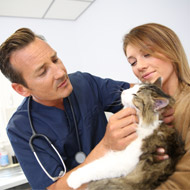Reviewing your organisational culture

Culture impacts on veterinary practice in almost all areas.
Your organisational culture is what makes you stand out from the crowd. It helps to promote your business and makes you a place where people want to work and to stay.
Speaking at the SPVS/VMG Congress in January, business support manager Fiona Nichol described culture as the day to day interactions and values within a group. She explained how culture encompasses behaviour, tradition, practice history, values and rituals.
Culture impacts on veterinary practice in almost all areas, affecting training and development, teamwork, fairness, relationship skills and the way employees are recognised and rewarded. A good culture in a practice will help to retain employees, increase productivity and definitely improves staff/client engagement.
Cultures of course vary. In the case of the Apple brand, Steve Jobs maintained a culture of secrecy because he did not want information about his new products to be leaked. His employees adhere to this culture and his business is highly successful. Compare this with the recent Uber failure, where there were no defined rules of engagement and no set culture for the organisation.
Fiona talked about two culture models - those of Charles Handy, an Irish author and philosopher specialising in organisational behaviour management, and Ed Schein, an influential writer on organisational culture.
Handy looked at four different kinds of culture that can exist within organisations: power culture, where few have the power to make decisions; task culture, where individuals have specialist skills and responsibilities based on their tasks; role culture, which is based on roles and responsibilities, and person culture, where individuals see themselves as greater than the organisation and play by their own rules.
The Schein model describes three levels of culture: artefacts (for example, a visual culture where uniform and brands play an important part), espoused values - where the business plan and the goals are paramount, and thirdly assumptions and benefits - which concentrates on behaviours attitudes and unconscious beliefs.
Fiona quoted Peter Drucker, who is known as the 'father of management thinking'. She said that 'organisational culture eats strategy for breakfast, lunch and dinner' to illustrate that no matter what your strategy may be, the culture of your organisation will override it.
She described cultural types such as 'flexible overstable' (ie. adaptive and dynamic versus orderly and controlled), and 'internal over external' (ie. inward and inclusive versus external and outgoing).
Fiona stressed the importance of reviewing your practice culture. This can be achieved by using internal focus groups and by creating a vision for the future with short-term wins. Her recipe for creating and maintaining a good practice culture was to define it, teach it, live it, measure it and reward it.



 The RCVS has announced a new version of its 1CPD mobile app, with enhanced features for veterinary surgeons and veterinary nurses to record their continuing professional development.
The RCVS has announced a new version of its 1CPD mobile app, with enhanced features for veterinary surgeons and veterinary nurses to record their continuing professional development.